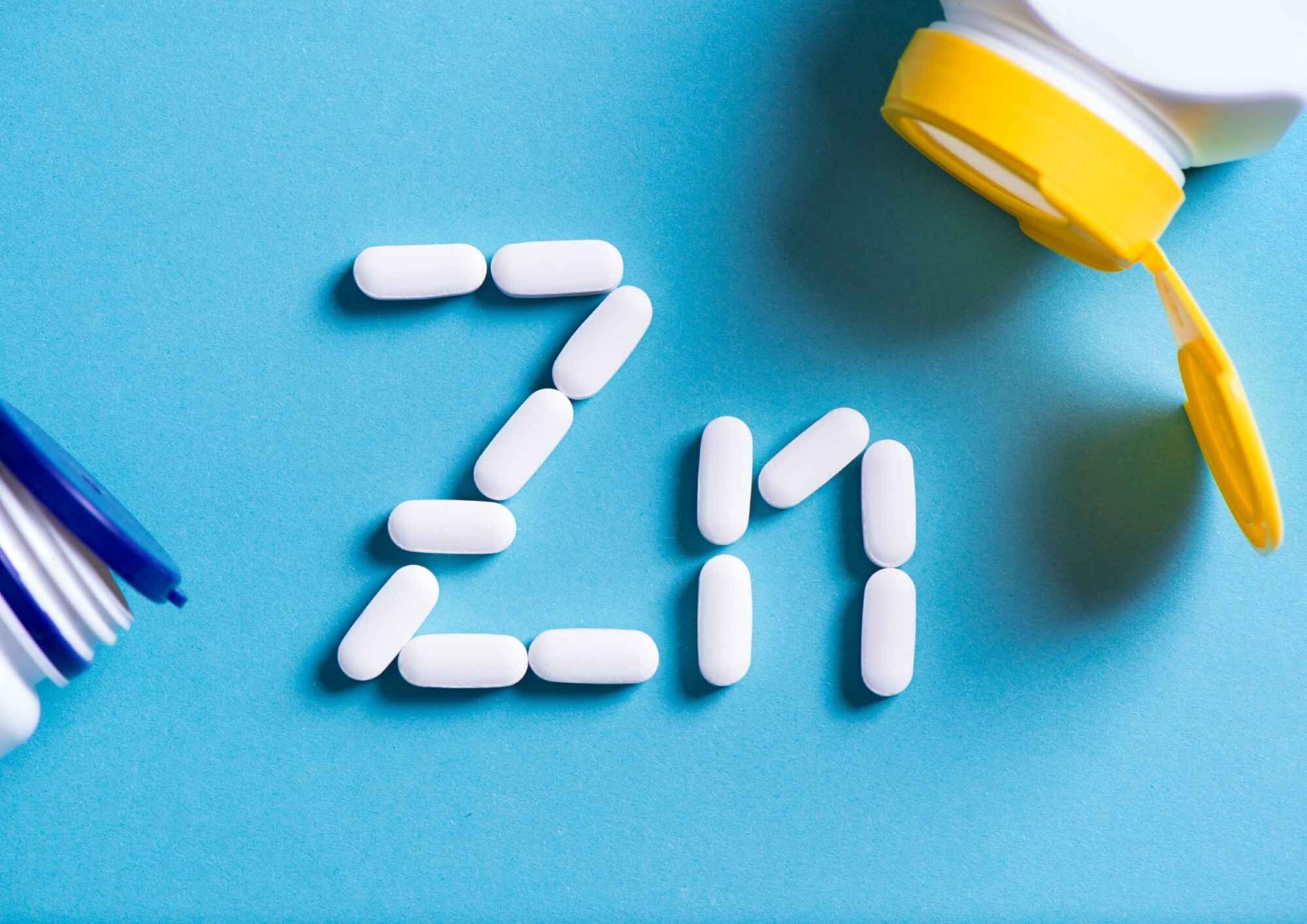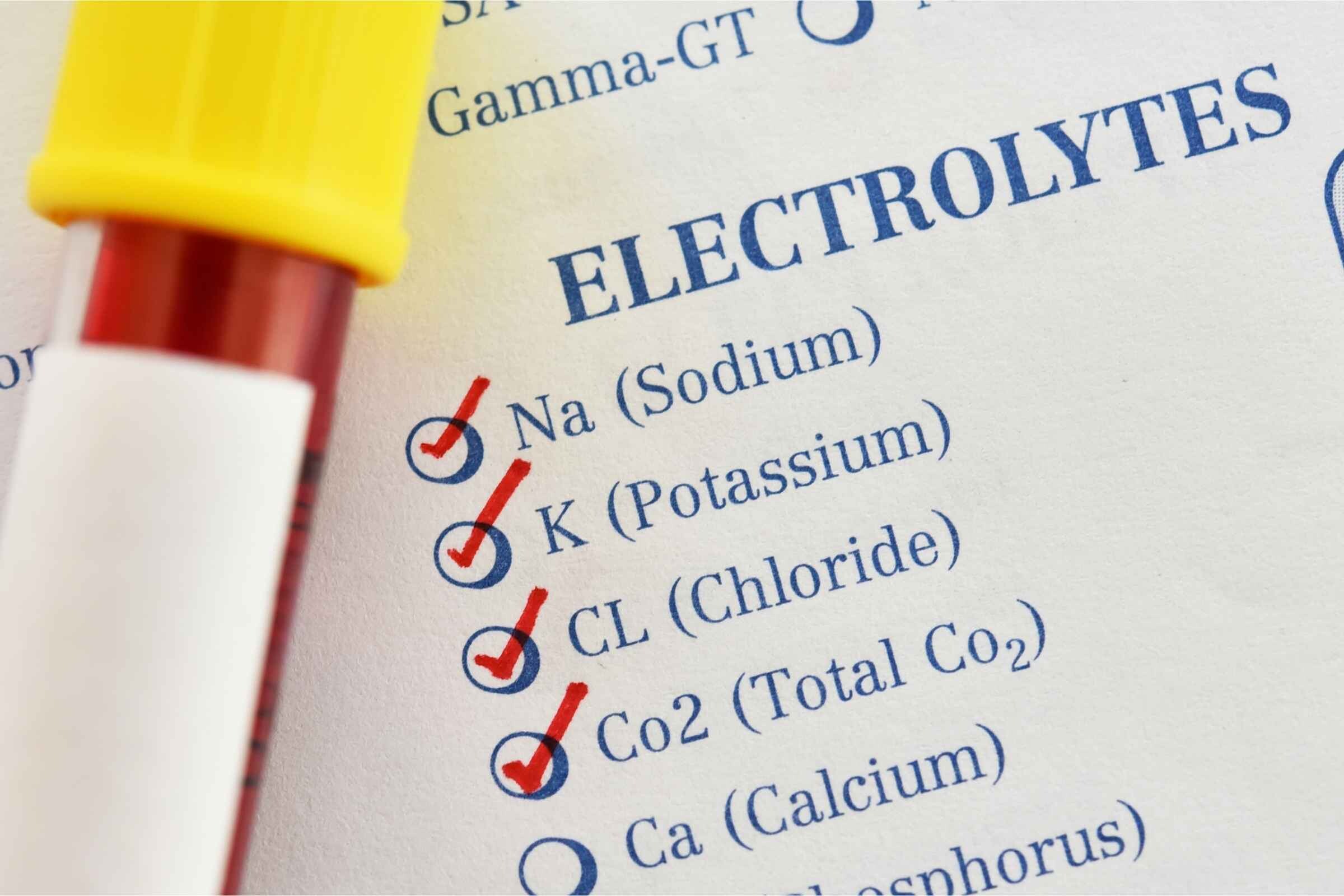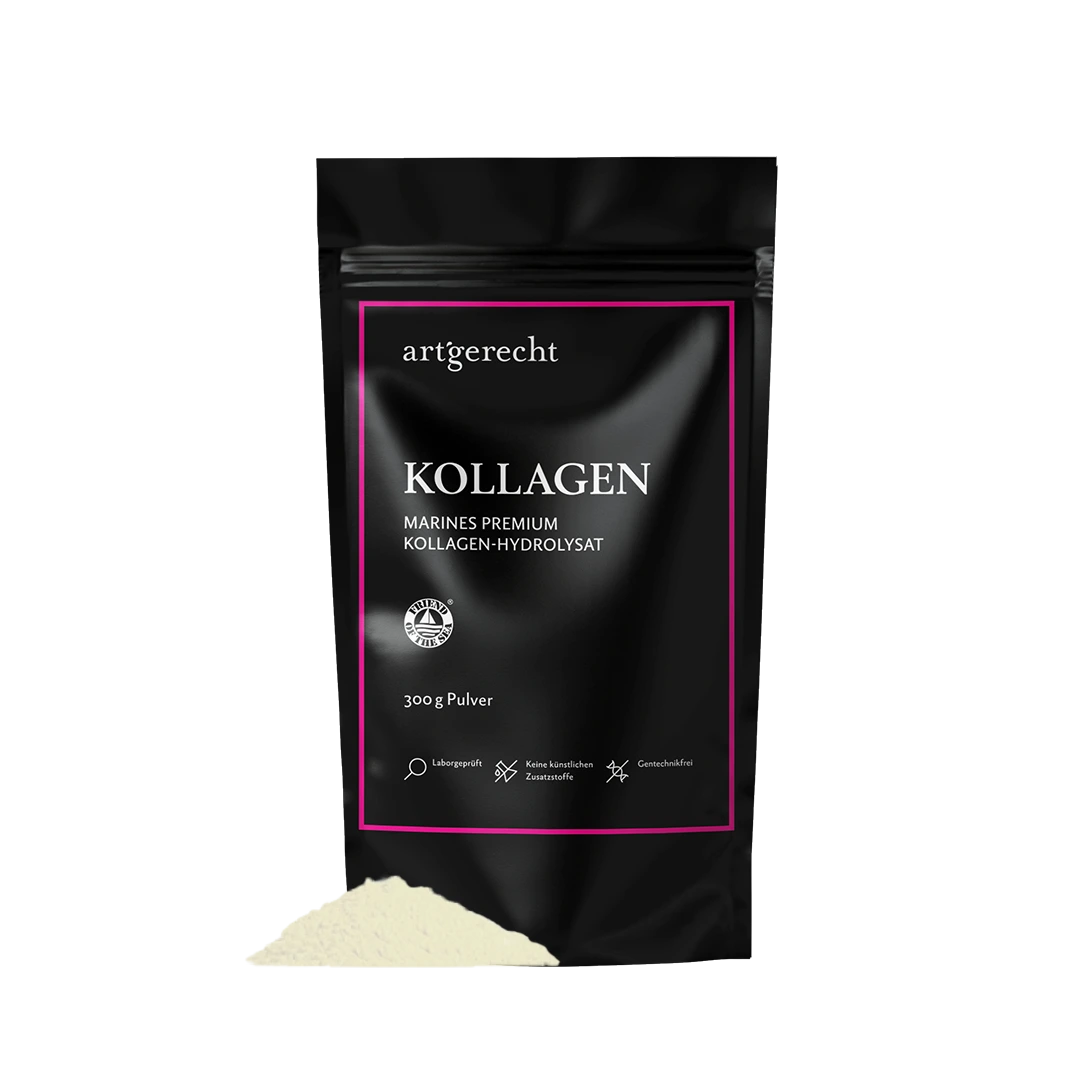Enzymes, especially digestive enzymes, serve to optimally break down nutrients. This is vital, as otherwise no nutrients would enter the body to produce energy. If enzymes are missing or are not formed sufficiently, our body becomes unbalanced. But what are enzymes and how do they work?
What are enzymes?
Enzymes are proteins that are produced by the body itself. They act as so-called biocatalysts and serve to activate and accelerate biochemical reactions in our organism. For example, specific digestive enzymes contained in saliva, pancreas, intestinal secretions and gastric juice are important for digestion. Digestive enzymes optimally break down our food into its components and thus prepare the absorption of nutrients via the intestine and the intestinal wall.
Enzymes are found in various areas of the body and are involved in most metabolic processes in the body, such as:
| Organ | Enzyme | Function |
| Liver | GPT (glutamate pyruvate transaminase – ALAT) | Metabolic process for nitrogen formation |
| Muscle | Creatine kinase | Fast energy production |
| Kidney | Renin | Cascade that triggers blood pressure regulation (increase) |
| Gastrointestinal tract | Digestive enzymes | Assist digestion by breaking down into absorbable food components |
How are enzymes formed?
Digestive enzymes can be roughly divided into three groups, each corresponding to the macronutrients:
| Enzyme group | Macronährstoff | Split product |
| Lipases | Fats | Fatsäuren |
| Proteases | Proteins | Peptides and amino acids |
| Amylases | monosaccharides / sugars |
In reverse, this means that fats, proteins and carbohydrates have always been part of the human diet. In particular, the enzyme amylase, which is already present in oral saliva and breaks down starch and glycogen, suggests that the human diet consists of long-chain carbohydrates;diet of long-chain carbohydrates and starchy foods (for example root vegetables and tubers) were part of the diet and should still be today [1].
Our „modern“ diet, in which fat, proteins and carbohydrates are often combined (e.g. pork knuckle with knuckles of pork). For example, pork knuckle with potatoes and soy) requires larger amounts of enzymes. These may not be produced sufficiently under certain circumstances, which in turn often leads to digestive problems [2].
How do enzymes work?
The function of enzymes is to break down and break down substances by means of a chemical reaction so that they can then be absorbed or converted so that the degradation product can be excreted. They have numerous functions and are involved in most metabolic processes in our body.
When we eat, the odor stimulus, the taste and also the stretching of the stomach ensure the production and release of digestive enzymes even before the food arrives in the intestine. The “peak” of enzyme release is around 60 minutes after the meal and lasts for up to four hours [3]. The degree of enzyme secretion is also determined by the calorie density - the more calories we consume, the more enzyme secretion is released [4].How our psyche influences digestion
In addition to what we eat and drink every day, environmental influences and our body's reactions also have an impact on digestion. Mental stress, for example, causes an altered release of digestive enzymes and production of gastric acid [5]. Chronic stress can have an effect on different levels. Among other things, it activates the immune system, which in turn is associated with poorer digestion [6].
Why is that? Here, too, it is worth taking a look at evolutionary development [7]: Under mental or physical stress, our stress system is activated: A reaction of certain (sympathetic) nerve fibers and various hormones occurs, which puts the organism into a kind of „flight-fight mode“. The evaluation of stress takes place in the brain and it is not possible to distinguish whether it is actually an attack by a wild animal or whether we are being stressed by the steering wheel. Only after the stress phase has ended can the body enter a rest and regeneration phase, where other hormones and nerve fibers (parasympathetic nervous system) are important. In this state, digestion is also optimally possible again [7].
This is bad for our stomachs – digestive complaints and intolerances
Enzymes, especially digestive enzymes, are used for the optimal breakdown of food and nutrients. Sufficient enzyme production is therefore vital, as without the breakdown, no nutrients would enter the body to produce energy. Illnesses or intolerances to foods or ingredients in our diet can cause digestive problems. Here are some examples:
Lactose
Many people do not digest lactose well as the enzyme lactase cannot be produced in sufficient quantities. However, an intolerance to lactose does not necessarily mean an intolerance [8]. It is possible to supplement lactase and thus consume dairy products despite an intolerance.
Histamine
Histamine is a natural tissue hormone that is absorbed through food. It must be broken down by the enzymes diamine oxidase (DAO) and/or histamine N-methyltransferase (HNMT) [9]. If there is a lack of DAO, it is possible that histamine cannot be broken down properly by the body. This in turn can lead to histamine intolerance. Headaches, digestive problems or hives are possible symptoms of such intolerance. However, this form of physical reaction has not been scientifically proven, and the mere diagnosis of DAO activity is not conclusive enough [10]. There is also the possibility that certain intestinal bacteria (especially lactobacilli) produce histamine and that the symptoms are triggered independently of histamine consumption [10]. Regardless of the actual „trigger“, a change of diet is advisable if you have symptoms. Those affected should try to avoid histamine-containing foods.
Foods that contain histamine:
| Meat | Cooked, marinated, smoked or heavily minced meat, offal, raw ham | |
| Fish | Tuna, mackerel, herring, sardines, anchovies; shellfish and crustaceans – mussels, crabs, prawns, shrimps | |
| Milk and dairy products | Hard cheese, semi-hard cheese, soft cheese, processed cheese, blue cheese, Emmental cheese, Parmesan cheese, Parmesan cheese | |
| Vegetables | Sauerkraut, spinach, tomatoes (incl. tomato paste and ketchup). tomato paste and ketchup), eggplant, avocado, olives, soy, sprouts and shoots, lentils, beans, soy, tofu, pickled vegetables, porcini mushrooms, morels, mushrooms | |
| Fruit | üoverripe fruit, strawberries, raspberries, oranges, citrus fruit, bananasfruits, banana, pineapple, kiwi, pears, canned fruit | |
| nuts | Walnünuts, cashew nuts, peanuts | |
| Greens | Black and green tea, green teagreen tea, nettle tea, tomato juice, citrus fruit juices, energy drinks, soy milk, red wine, white wine, sparkling wine and wheat beer | |
| Süßwaren | Cocoa, brown and dark chocolate, marzipan, nougat, jam, peanut cream | |
| Other | Flavor enhancers, soy sauce, hot spices, yeast, preserves | ;spices, yeast, preserves, finished and semi-finished products, wine and balsamic vinegar |
The exocrine pancreatic insufficiency (EPI)
This is a disease of the pancreas as a result of a primary disease of the pancreas.
The pancreas has a so-called endocrine and an exocrine part: this means that the pancreas produces hormones, such as insulin, which are released directly into the bloodstream (endocrine). On the other hand, the pancreas also produces the substrate that is released directly into the intestine as pancreatic juice (exocrine). The exocrine part is therefore affected in this disease, which can also lead to changes in the hormones in the pancreas [10]. Typical symptoms of EPI are diarrhea, greasy stools, flatulence or visible food residue in the stool.
Primary diseases and the frequency of association with exocrine pancreatic insufficiency
Selection of clinical pictures according to Capurso et al. 2019:
| Disease | Frequency of EPI |
| Chronic pancreatitis (inflammation of the pancreas) | 30-90% |
| Acute pancreatitis (acute pancreatitis) | Mild form: 15-20% |
| Type I diabetes mellitus | 30-50% |
| Type II diabetes mellitus | 20-30% |
| Chronic inflammatory bowel disease | Colitis ulcerosa 10%Crohn's disease 4% |
| Age | 15-30% |
| Tobacco use | 10-20% |
This selection shows that the functioning of the pancreas can be a problem for many people (in percentage terms).
Self-test
How to recognize signs of digestive problems:
| Question | YES | NO | |
| Diarrhea | [ ] | [ ] | |
| Oily stool | [ ] | [ ] | |
| Constipation | [ ] | [ ] | |
| Strange smelling stool | [ ] | [ ] | |
| Bloated feeling / bloating | [ ] | [ ] | [ ] |
| Outgoing winds, intestinal odors | [ ] | [ ] | |
| Visible food residue in the stool | [ ] | [ ] | |
| Pain in the upper abdomen | [ ] | [ ] | |
| Exhaustion | [ ] | [ ] | |
| Unwanted weight change | [ ] | [ ] | |
| Headache | [ ] | [ ] |
If five or more symptoms occur at least 3 times a week or more frequently, digestive problems are very likely and we recommend talking to a doctor or nutritionist.
Conclusion:
A balanced diet promotes healthy digestion
A healthy and species-appropriate diet not only supports good digestion, but also our general well-being. Around 19 meals a week, a low calorie density and natural, fresh products such as vegetables, fruit, nuts or fish are ideal. If your diet often looks different in reality, here's our tip: There are food-supplementing enzyme preparations that support our digestion and can be taken as a supplement [11]. Attention should be paid to a broad enzyme spectrum and the use of enzymes obtained through fermentation processes [11].
Literature:
- Lindeberg, 2010.
- Thorburn, Macia, and Mackay 2014.
- Keller and Layer, 2005.
- Keller and Layer, 2005.
- Holtmann et al. 1989.
- Caso, Leza, and Menchen, 2008.
- Nesse, Bhatnagar, Ellis, 2016.
- Szilagyi, 2015.
- Reese et al, 2017.
- Capurso et al. 2019.
- Roxas, 2008.
Passende Produkte
-
 €45.90
€45.90
Kürzlich hinzugefügte Beiträge
-
 Zink reduziert nachweislich die Krankheitsdauer – Was sagt die Wissenschaft?Zink kann mehr als nur das Immunsystem stärken. Studien zeigen, dass es die Dauer von Erkältungen spürbar verkürzen kann.
Zink reduziert nachweislich die Krankheitsdauer – Was sagt die Wissenschaft?Zink kann mehr als nur das Immunsystem stärken. Studien zeigen, dass es die Dauer von Erkältungen spürbar verkürzen kann. -
 Milk thistle: effect on liver health and detoxificationHow does milk thistle really protect our liver? Find out how silymarin neutralizes free radicals, supports detoxification and what studies say about its effect on fatty liver, hepatitis & co. Find out more now!
Milk thistle: effect on liver health and detoxificationHow does milk thistle really protect our liver? Find out how silymarin neutralizes free radicals, supports detoxification and what studies say about its effect on fatty liver, hepatitis & co. Find out more now! -
 Menopause is not a disease: everything women (and men) should knowHalf of humanity is affected by the menopause. The PRO issue of Health Nerds is all about facts, myths and tips about the menopause.
Menopause is not a disease: everything women (and men) should knowHalf of humanity is affected by the menopause. The PRO issue of Health Nerds is all about facts, myths and tips about the menopause. -
 Allergien und Heuschnupfen – Häufigkeit, Ursachen, Behandlung und PräventionOb Gräser, Pollen oder Hausstaub – Allergien betreffen immer mehr Menschen. Erfahre, warum sie entstehen, welche Therapien helfen und wie Du mit gezielter Vorbeugung die Beschwerden bei Dir oder Deinem Kind langfristig lindern kannst.
Allergien und Heuschnupfen – Häufigkeit, Ursachen, Behandlung und PräventionOb Gräser, Pollen oder Hausstaub – Allergien betreffen immer mehr Menschen. Erfahre, warum sie entstehen, welche Therapien helfen und wie Du mit gezielter Vorbeugung die Beschwerden bei Dir oder Deinem Kind langfristig lindern kannst. -
 Alcohol - health elixir or underestimated risk?There is a persistent rumor that alcohol in moderation can be good for your health. There are even research studies that prove this. But are they true?
Alcohol - health elixir or underestimated risk?There is a persistent rumor that alcohol in moderation can be good for your health. There are even research studies that prove this. But are they true? -
 Elektrolyte – Die unsichtbaren Regisseure unseres KörpersElektrolyte steuern lebenswichtige Prozesse wie Muskelarbeit, Nervenfunktion und Flüssigkeitshaushalt. Erfahre, warum sie für Gesundheit und Leistung so entscheidend sind.
Elektrolyte – Die unsichtbaren Regisseure unseres KörpersElektrolyte steuern lebenswichtige Prozesse wie Muskelarbeit, Nervenfunktion und Flüssigkeitshaushalt. Erfahre, warum sie für Gesundheit und Leistung so entscheidend sind. -
 Zink reduziert nachweislich die Krankheitsdauer – Was sagt die Wissenschaft?Zink kann mehr als nur das Immunsystem stärken. Studien zeigen, dass es die Dauer von Erkältungen spürbar verkürzen kann.
Zink reduziert nachweislich die Krankheitsdauer – Was sagt die Wissenschaft?Zink kann mehr als nur das Immunsystem stärken. Studien zeigen, dass es die Dauer von Erkältungen spürbar verkürzen kann. -
 Milk thistle: effect on liver health and detoxificationHow does milk thistle really protect our liver? Find out how silymarin neutralizes free radicals, supports detoxification and what studies say about its effect on fatty liver, hepatitis & co. Find out more now!
Milk thistle: effect on liver health and detoxificationHow does milk thistle really protect our liver? Find out how silymarin neutralizes free radicals, supports detoxification and what studies say about its effect on fatty liver, hepatitis & co. Find out more now! -
 Menopause is not a disease: everything women (and men) should knowHalf of humanity is affected by the menopause. The PRO issue of Health Nerds is all about facts, myths and tips about the menopause.
Menopause is not a disease: everything women (and men) should knowHalf of humanity is affected by the menopause. The PRO issue of Health Nerds is all about facts, myths and tips about the menopause. -
 Allergien und Heuschnupfen – Häufigkeit, Ursachen, Behandlung und PräventionOb Gräser, Pollen oder Hausstaub – Allergien betreffen immer mehr Menschen. Erfahre, warum sie entstehen, welche Therapien helfen und wie Du mit gezielter Vorbeugung die Beschwerden bei Dir oder Deinem Kind langfristig lindern kannst.
Allergien und Heuschnupfen – Häufigkeit, Ursachen, Behandlung und PräventionOb Gräser, Pollen oder Hausstaub – Allergien betreffen immer mehr Menschen. Erfahre, warum sie entstehen, welche Therapien helfen und wie Du mit gezielter Vorbeugung die Beschwerden bei Dir oder Deinem Kind langfristig lindern kannst. -
 Alcohol - health elixir or underestimated risk?There is a persistent rumor that alcohol in moderation can be good for your health. There are even research studies that prove this. But are they true?
Alcohol - health elixir or underestimated risk?There is a persistent rumor that alcohol in moderation can be good for your health. There are even research studies that prove this. But are they true? -
 Elektrolyte – Die unsichtbaren Regisseure unseres KörpersElektrolyte steuern lebenswichtige Prozesse wie Muskelarbeit, Nervenfunktion und Flüssigkeitshaushalt. Erfahre, warum sie für Gesundheit und Leistung so entscheidend sind.
Elektrolyte – Die unsichtbaren Regisseure unseres KörpersElektrolyte steuern lebenswichtige Prozesse wie Muskelarbeit, Nervenfunktion und Flüssigkeitshaushalt. Erfahre, warum sie für Gesundheit und Leistung so entscheidend sind. -
 Zink reduziert nachweislich die Krankheitsdauer – Was sagt die Wissenschaft?Zink kann mehr als nur das Immunsystem stärken. Studien zeigen, dass es die Dauer von Erkältungen spürbar verkürzen kann.
Zink reduziert nachweislich die Krankheitsdauer – Was sagt die Wissenschaft?Zink kann mehr als nur das Immunsystem stärken. Studien zeigen, dass es die Dauer von Erkältungen spürbar verkürzen kann. -
 Milk thistle: effect on liver health and detoxificationHow does milk thistle really protect our liver? Find out how silymarin neutralizes free radicals, supports detoxification and what studies say about its effect on fatty liver, hepatitis & co. Find out more now!
Milk thistle: effect on liver health and detoxificationHow does milk thistle really protect our liver? Find out how silymarin neutralizes free radicals, supports detoxification and what studies say about its effect on fatty liver, hepatitis & co. Find out more now! -
 Menopause is not a disease: everything women (and men) should knowHalf of humanity is affected by the menopause. The PRO issue of Health Nerds is all about facts, myths and tips about the menopause.
Menopause is not a disease: everything women (and men) should knowHalf of humanity is affected by the menopause. The PRO issue of Health Nerds is all about facts, myths and tips about the menopause. -
 Allergien und Heuschnupfen – Häufigkeit, Ursachen, Behandlung und PräventionOb Gräser, Pollen oder Hausstaub – Allergien betreffen immer mehr Menschen. Erfahre, warum sie entstehen, welche Therapien helfen und wie Du mit gezielter Vorbeugung die Beschwerden bei Dir oder Deinem Kind langfristig lindern kannst.
Allergien und Heuschnupfen – Häufigkeit, Ursachen, Behandlung und PräventionOb Gräser, Pollen oder Hausstaub – Allergien betreffen immer mehr Menschen. Erfahre, warum sie entstehen, welche Therapien helfen und wie Du mit gezielter Vorbeugung die Beschwerden bei Dir oder Deinem Kind langfristig lindern kannst.
Empfohlene Produkte
Holistic support for bones, joints, muscles & skin
For your well-being – inside and outEssential Vitamin for Eyes, Skin, and Immune System
High-Dose Support for Cells & Immune DefenseFor your universal protection
As one of the most valuable proteins in the body, lactoferrin is a natural component of the immune system.For your iron balance
Specially formulated for your iron balance with plant-based curry leaf iron, Lactoferrin CLN®, and natural Vitamin C from rose hips.Holistic support for bones, joints, muscles & skin
For your well-being – inside and outEssential Vitamin for Eyes, Skin, and Immune System
High-Dose Support for Cells & Immune DefenseFor your universal protection
As one of the most valuable proteins in the body, lactoferrin is a natural component of the immune system.For your iron balance
Specially formulated for your iron balance with plant-based curry leaf iron, Lactoferrin CLN®, and natural Vitamin C from rose hips.Holistic support for bones, joints, muscles & skin
For your well-being – inside and outEssential Vitamin for Eyes, Skin, and Immune System
High-Dose Support for Cells & Immune DefenseFor your universal protection
As one of the most valuable proteins in the body, lactoferrin is a natural component of the immune system.For your iron balance
Specially formulated for your iron balance with plant-based curry leaf iron, Lactoferrin CLN®, and natural Vitamin C from rose hips.Holistic support for bones, joints, muscles & skin
For your well-being – inside and outEssential Vitamin for Eyes, Skin, and Immune System
High-Dose Support for Cells & Immune DefenseFor your universal protection
As one of the most valuable proteins in the body, lactoferrin is a natural component of the immune system.For your iron balance
Specially formulated for your iron balance with plant-based curry leaf iron, Lactoferrin CLN®, and natural Vitamin C from rose hips.




